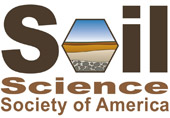Utilizing LEAF to Increase Biomass Feedstock Supplies from Agricultural Land.
See more from this Division: OralUtilizing LEAF to Increase Biomass Feedstock Supplies from Agricultural Land.
See more from this Session: Food, Energy and Water Security 1C
Friday, March 7, 2014: 3:15 PM
Grand Sheraton, Magnolia
The start-up of three full-scale corn stover bioenergy conversion facilities in 2014 will require a substantial increase in sustainable biomass feedstock. Supplying crop residues without having a negative impact on ecosystem services is indeed a “grand challenge” associated with sustainable food and energy supplies. The Landscape Environmental Assessment Framework (LEAF) environmental process modeling toolkit was developed to help make sustainable biomass feedstock supply decisions to support bioenergy and bio-product industries. Used initially to project sustainable crop residue supplies for the revised Billion Ton (BT2) report, this presentation will examine the continued refinement of LEAF and it potential use for comparing effects of conservation practices such as reduced or no-tillage practices, cover crops, and vegetative buffer strips to increase sustainable supplies of harvestable biomass without degrading soil quality. Currently, LEAF integrates the Revised Universal Soil Loss Equation (RUSLE2), Wind Erosion Prediction System (WEPS), Soil Conditioning Index (SCI), and the DAYCENT model. Each model is run in an optimized manner with their inputs and outputs being linked seamlessly through the LEAF framework to produce landscape plans. We conclude that with further development and validation, simulation tools such as LEAF will become incorporated into business plans for many different biomass-based industries.
See more from this Division: OralSee more from this Session: Food, Energy and Water Security 1C
Previous Abstract
|
Next Abstract >>
